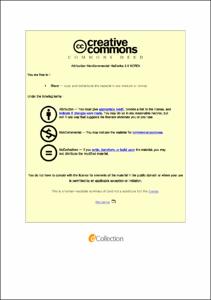A Study on Vessel Motion Control
- Alternative Title
- 선박운동제어에 관한 연구
- Abstract
- In the vessel motion control, ship berthing has been known as one of the most complicated and challenging procedures. The difficulties for berthing operation in the harbor could be outlined as the reduction in controllability at low speed, the effect of changes in hydrodynamic coefficients on ship handling, the large effect due to environmental disturbances, etc. Usually, tugboats should be used to assist it by pulling and pushing the vessel.
Another difficult task that vessel motion control had to face is the station keeping where constant of slowly-varying disturbances such as mean wind forces, mean currents and tidal currents need to be rejected. This is entirely handled by the positioning mooring (PM) system. Besides some vessels such as barges, disabled ships, semi-submersible rigs, drill ships, etc. could not move by themselves and need to be towed by tugboats.
In any case, rope is used as an indispensable facility, and rope tension control is the key point. In order to precisely and safely control the vessel’s motion, the dynamic characteristics of the towing rope should be well examined.
This dissertation presents further study on modeling dynamics of towing rope system and applying rope tension control strategy on vessel motion control.
A control-oriented dynamic model of a towing rope system with variable length is established. In this simple model, a winch which is driven by a motor torque uses the towing rope to pull a cart. The rope is modeled as a straight and massless segment, and mass of rope is lumped partly to the cart and halfway to the winch. In addition, the changing spring constant and damping constant of towing rope are considered when the winch winds in. Finally, a reduced-order observer-based servomechanism controller is designed, and the overall system is verified by computer simulation.
Next, a rope tension control system is designed and implemented. A family of dynamic models of towing rope system are identified by changing the rope length. Among them, a representative model is selected, and the others are considered as uncertain models. Then, this works designs a μ-synthesis based on two-degree-of-freedom (2DOF) robust control system to cope with strong uncertainty and nonlinear property included in the real plant. An experimental comparison is conducted between the proposed control method and existing proportional–integral (PI) control method. The results indicate that the proposed method is more efficient and useful than the conventional one.
The problem of designing a PM system for a barge vessel is addressed. A model ship and four mooring systems used in this study are designed and created. The three-degree-of-freedom (3DOF) mathematical model of a system consisting of a barge ship and mooring systems is derived. Hydrodynamic coefficients of the low speed model for PM vessel are identified by suitable experiments. A PI control scheme is implemented to achieve PM for the vessel by using rope tension control strategy. Real time control scheme integrating CompactRIO platform and LabVIEW program language is developed. The proposed strategy is finally tested on station keeping, and desired positions of the model vessel are obtained.
- Issued Date
- 2017
- Awarded Date
- 2017. 2
- Type
- Dissertation
- Publisher
- 부경대학교 대학원
- Affiliation
- 부경대학교 대학원
- Department
- 대학원 제어기계공학과
- Advisor
- 김영복
- Table Of Contents
- Chapter 1. Introduction 1
1.1 Background and Motivation 1
1.1.1 Overview of Vessel Motion Control 1
1.1.1.1 Ship Berthing 1
1.1.1.2 Dynamic Positioning (DP) 2
1.1.1.3 Positioning Mooring (PM) 4
1.1.2 Overview of Rope Tension Control 5
1.1.2.1 Towing Rope Model 5
1.1.2.2 Mooring Rope Model 6
1.1.3 Motivation of Study 7
1.2 Objectives of Study 8
1.3 Organization of Thesis 8
Chapter 2. Control-Oriented Modeling of Towing Rope System 10
2.1 Introduction 10
2.2 System Modeling 12
2.2.1 Straight-line Towing Rope Model 12
2.2.2 Simplified Model for Towing Rope System 15
2.3 Controller Design and Simulation Results 19
2.3.1 Observer-based Servomechanism Design 19
2.3.2 Simulation Results 23
2.4 Summary 26
Chapter 3. System Identification and Control Design of Towing Rope System 28
3.1 Introduction 28
3.2 Identification of Towing Rope System 28
3.2.1 System Configuration 28
3.2.2 Data Acquisition 31
3.2.3 Developed Plant Model 33
3.2.4 Uncertainty Analysis 34
3.3 Robust Control Design 36
3.3.1 Design Specifications 36
3.3.2 Open-loop and Closed-loop System Interconnections 39
3.3.3 μ-Synthesis 40
3.3.4 Order Reduction of μ-Controller 41
3.3.5 Analysis of Closed-loop System 44
3.4 Experimental Results 45
3.5 Summary 47
Chapter 4. Vessel Motion Control using Rope Tension Control Strategy 49
4.1 Introduction 49
4.2 Mathematical Modelling 49
4.2.1 Control Strategy 49
4.2.2 Vessel Motion 51
4.2.3 Multi-rope Mooring System Dynamics 53
4.3 Controller Design 55
4.4 Experiment 57
4.4.1 System Identification 57
4.4.2 Experimental Results 61
4.5 Summary 70
Chapter 5 Conclusion and Future Study 71
5.1 Conclusion 71
5.2 Future Study 73
References 74
Publication and Conference 83
- Degree
- Doctor
- Files in This Item:
-
-
Download
 A Study on Vessel Motion Control.pdf
기타 데이터 / 4.3 MB / Adobe PDF
A Study on Vessel Motion Control.pdf
기타 데이터 / 4.3 MB / Adobe PDF
-
Items in Repository are protected by copyright, with all rights reserved, unless otherwise indicated.